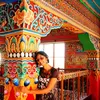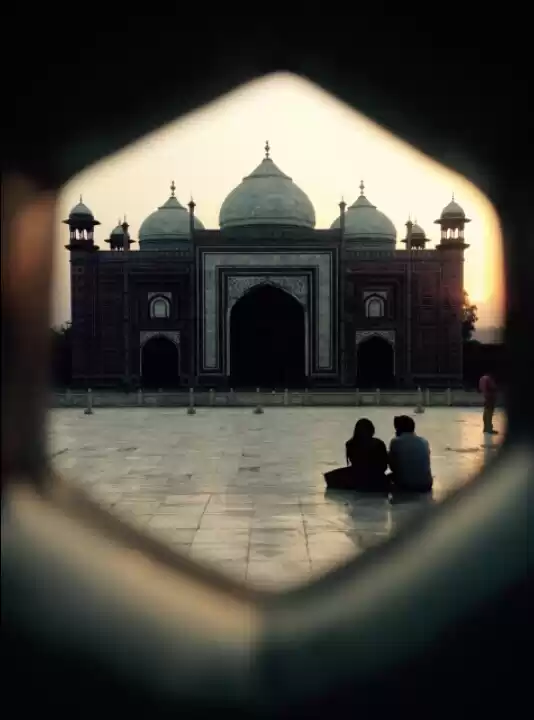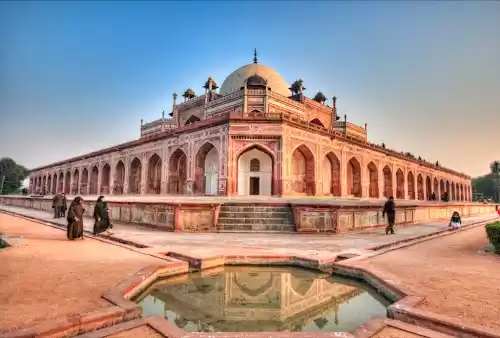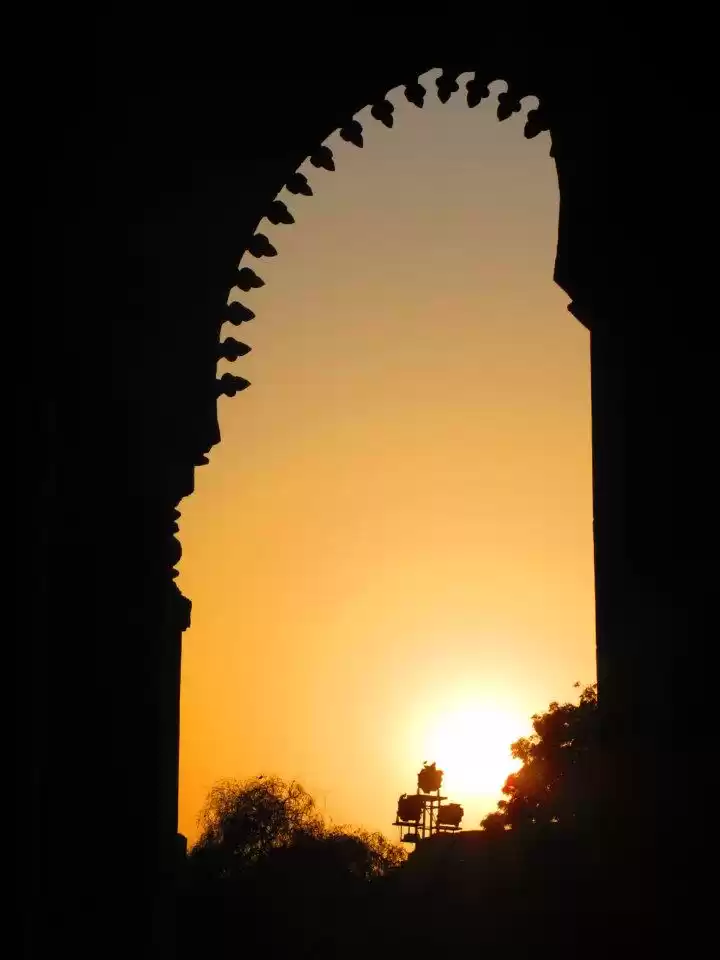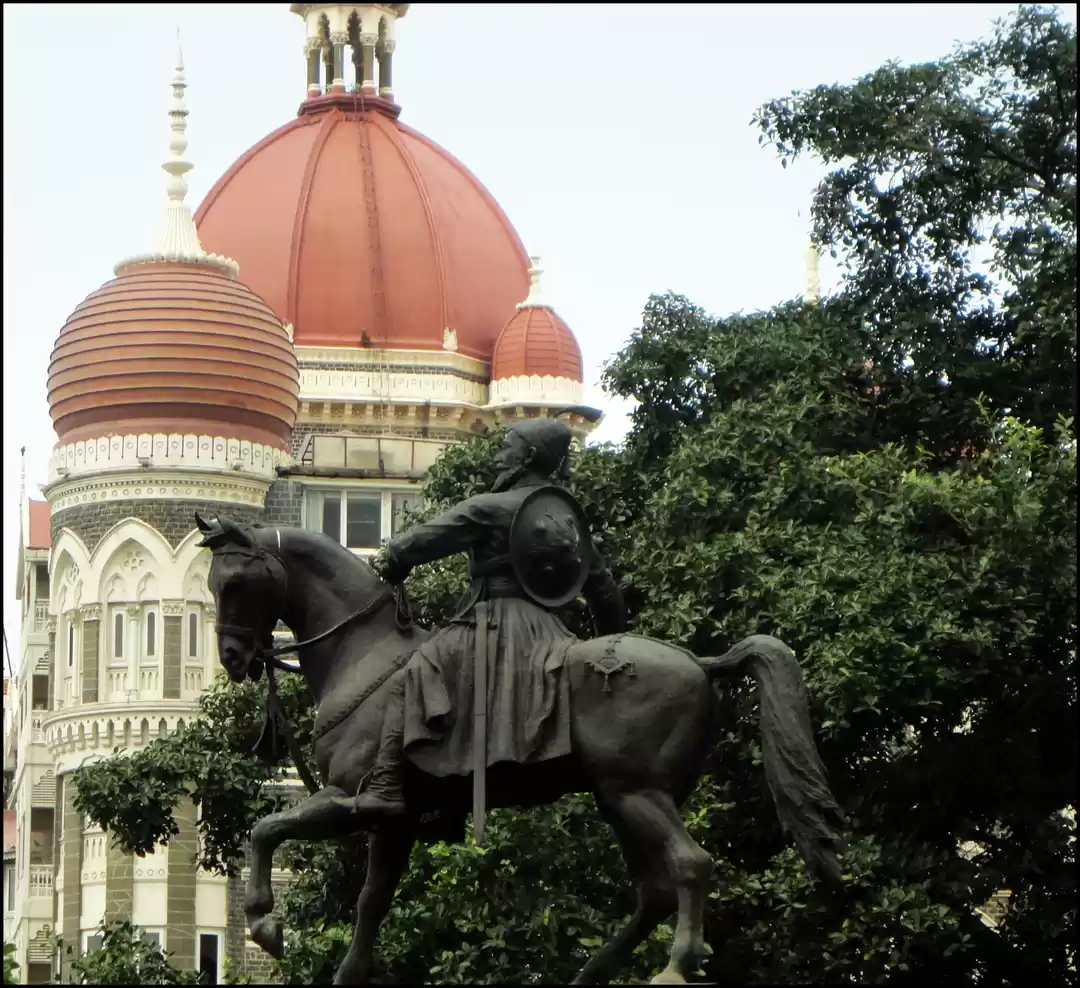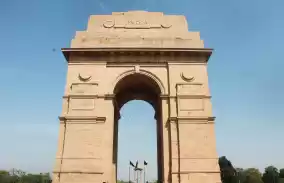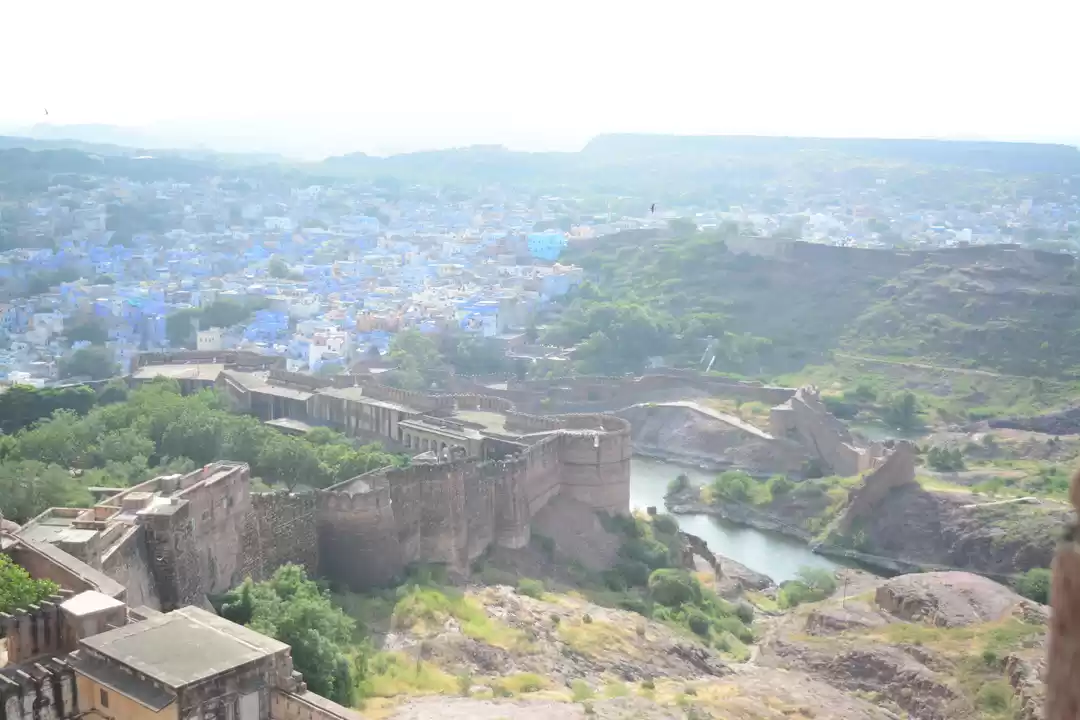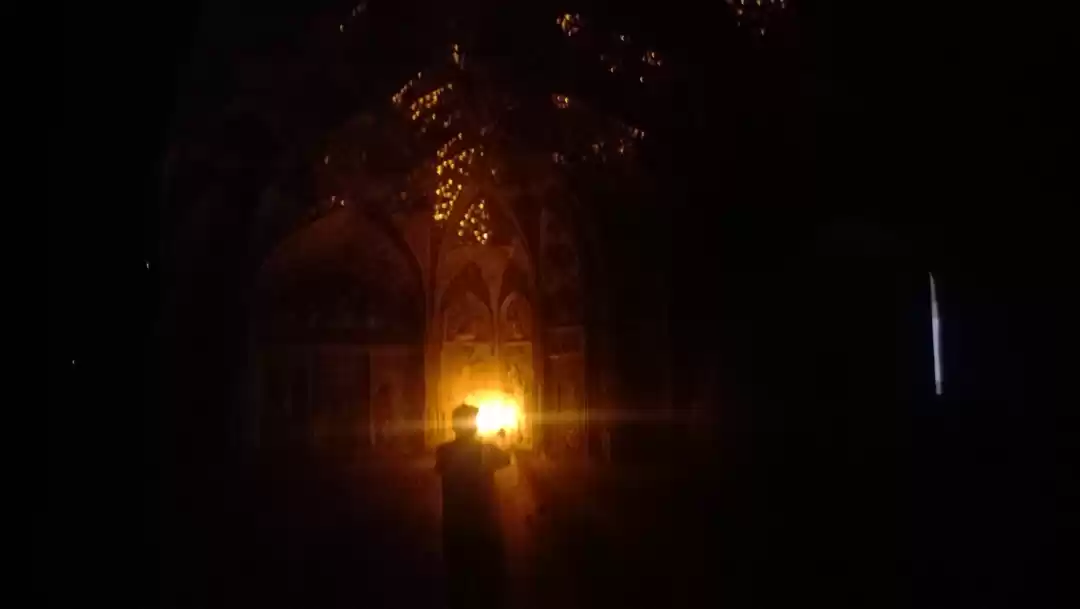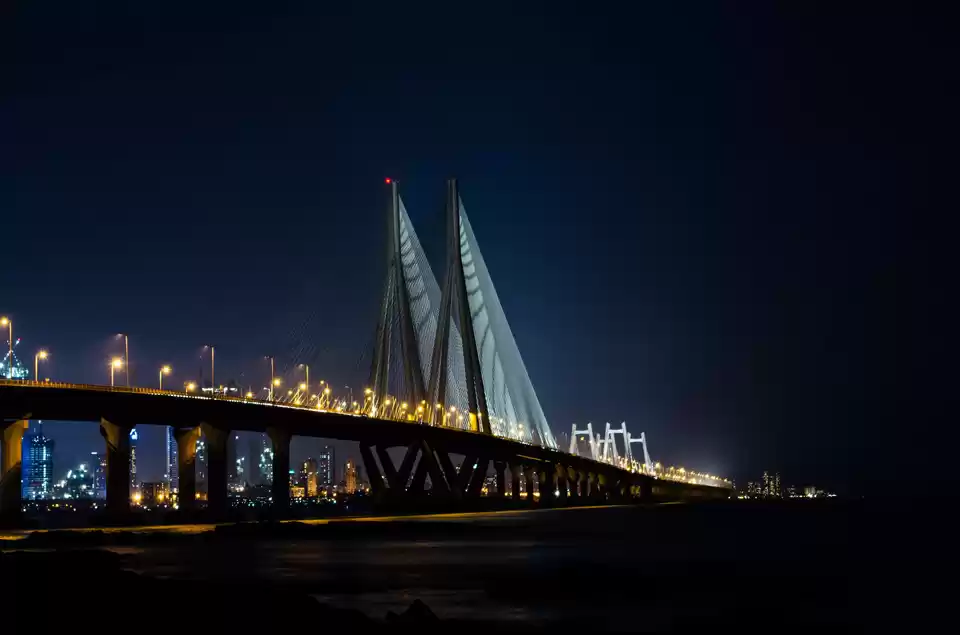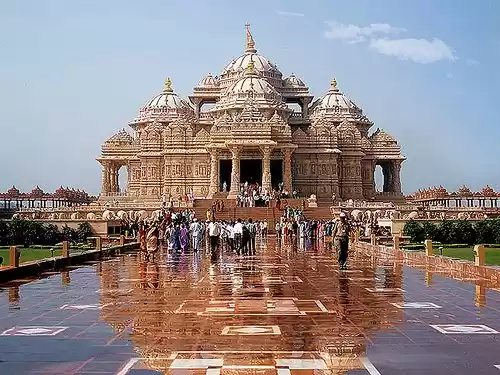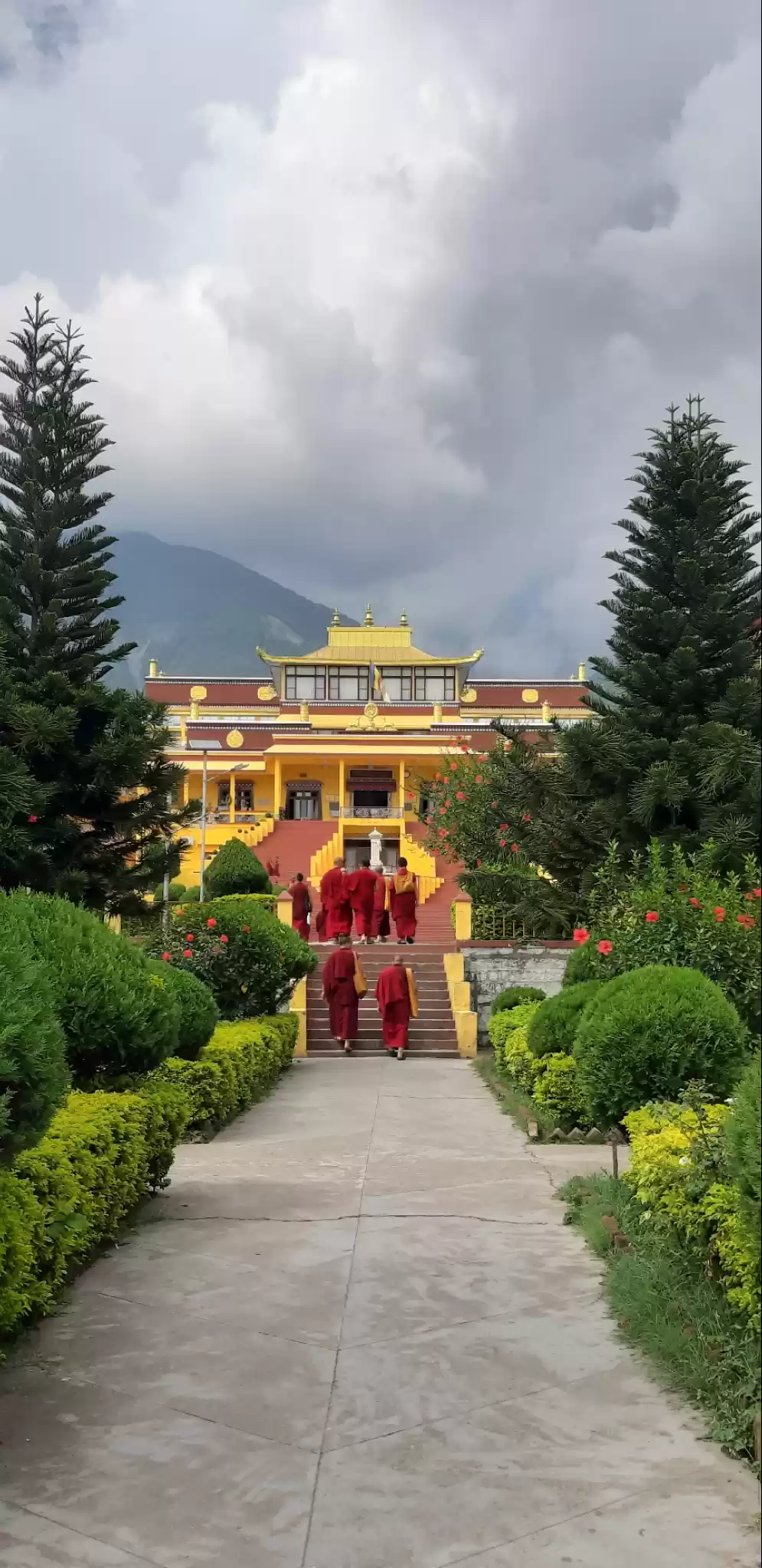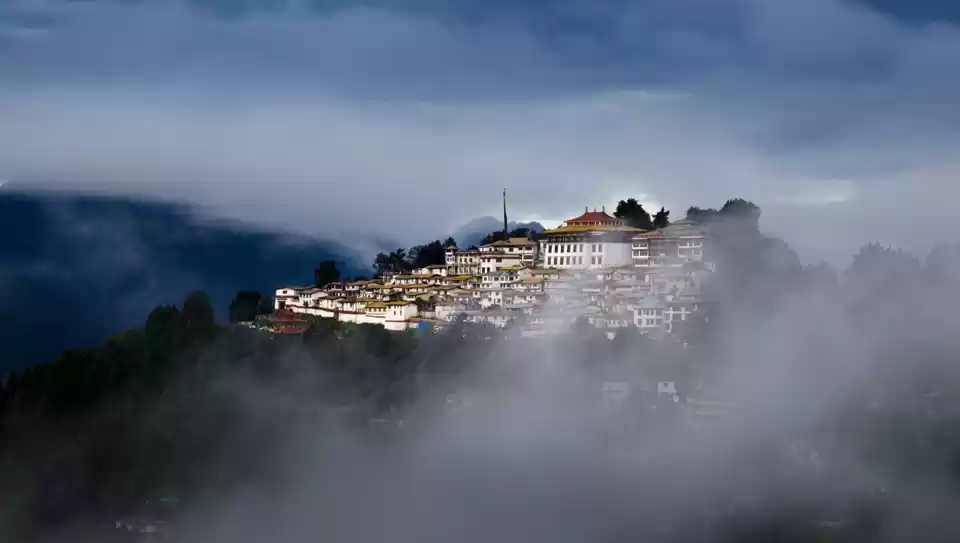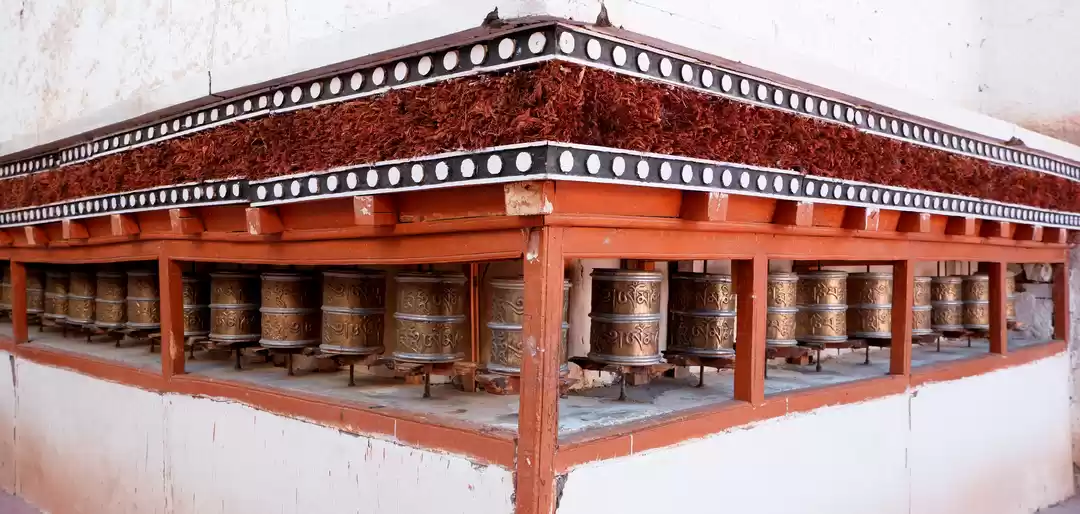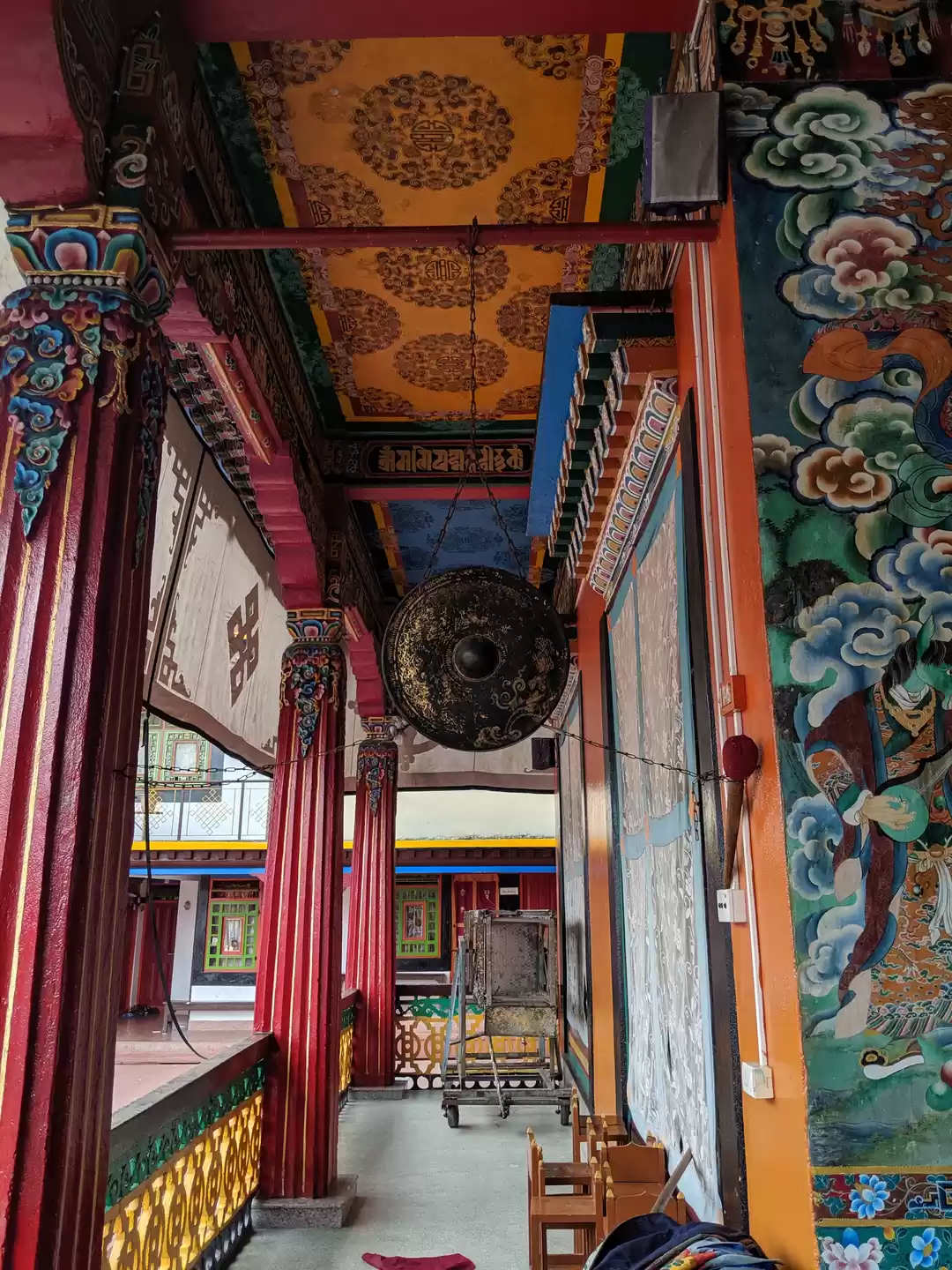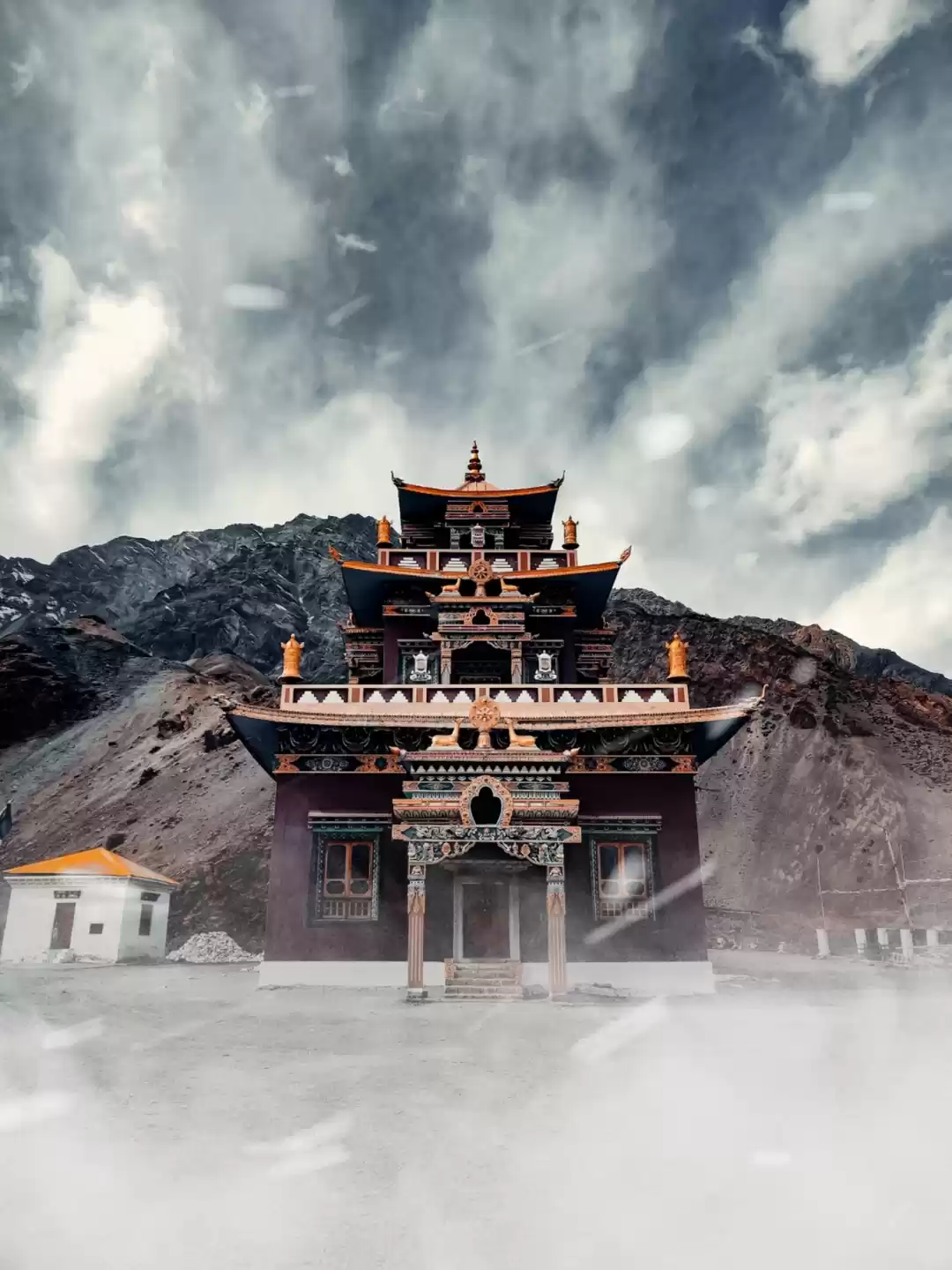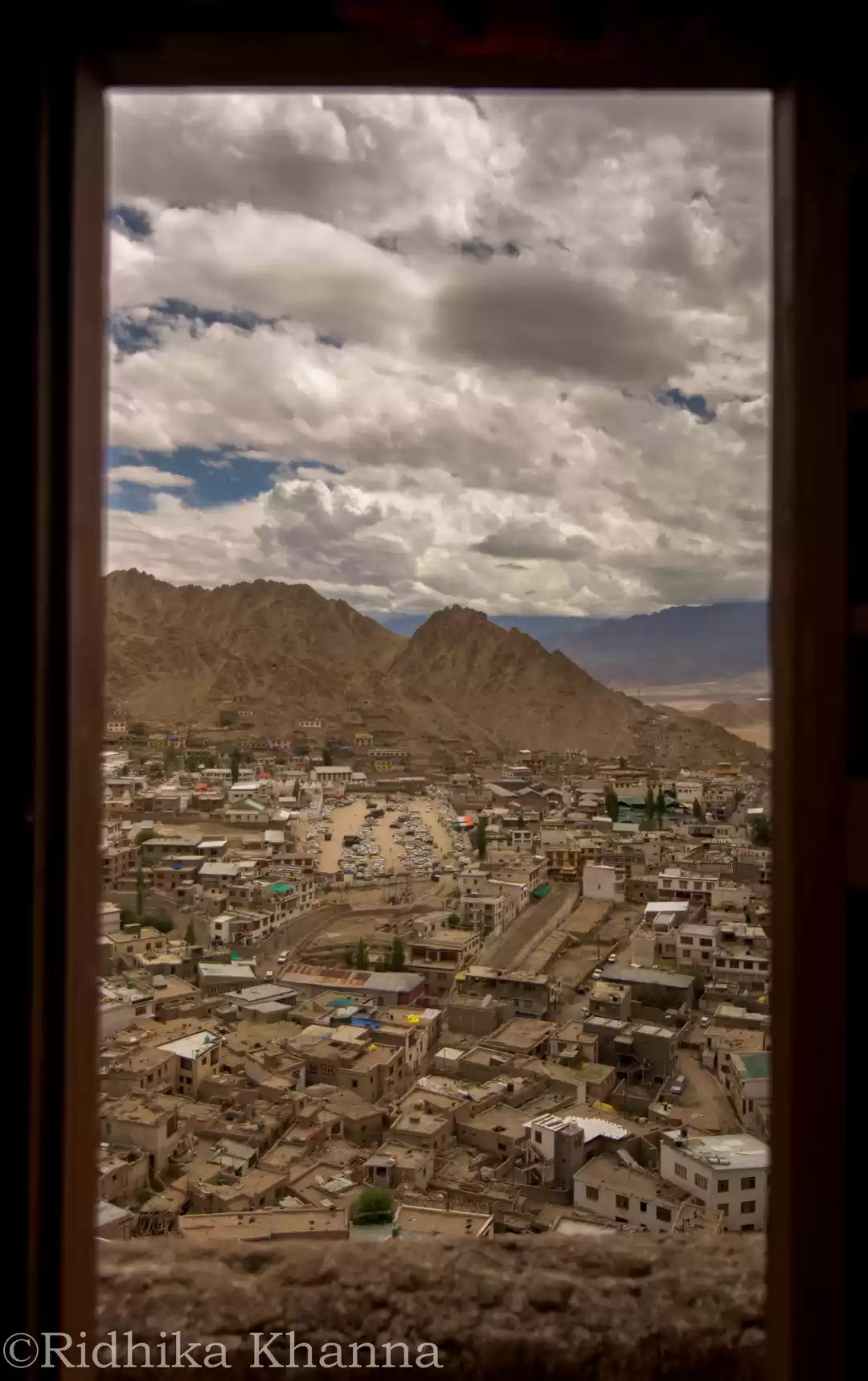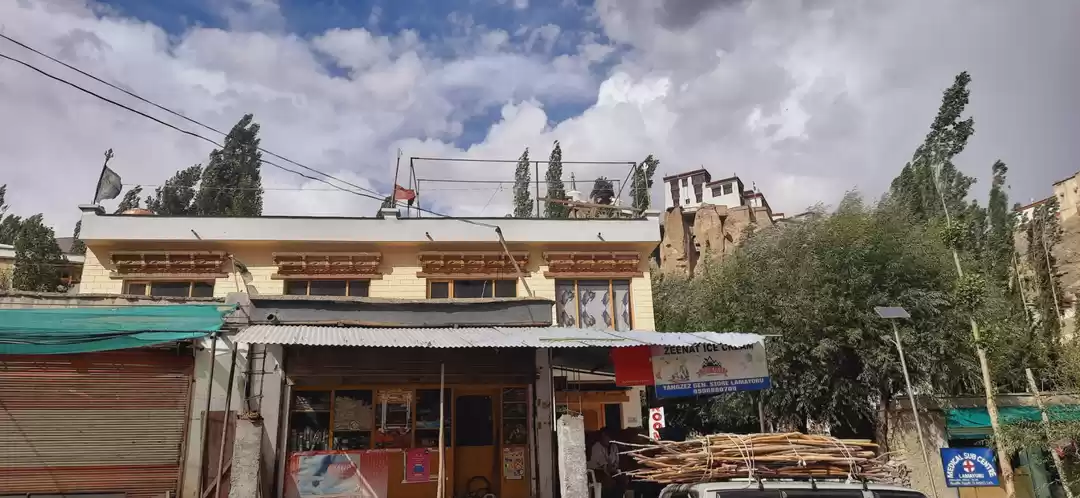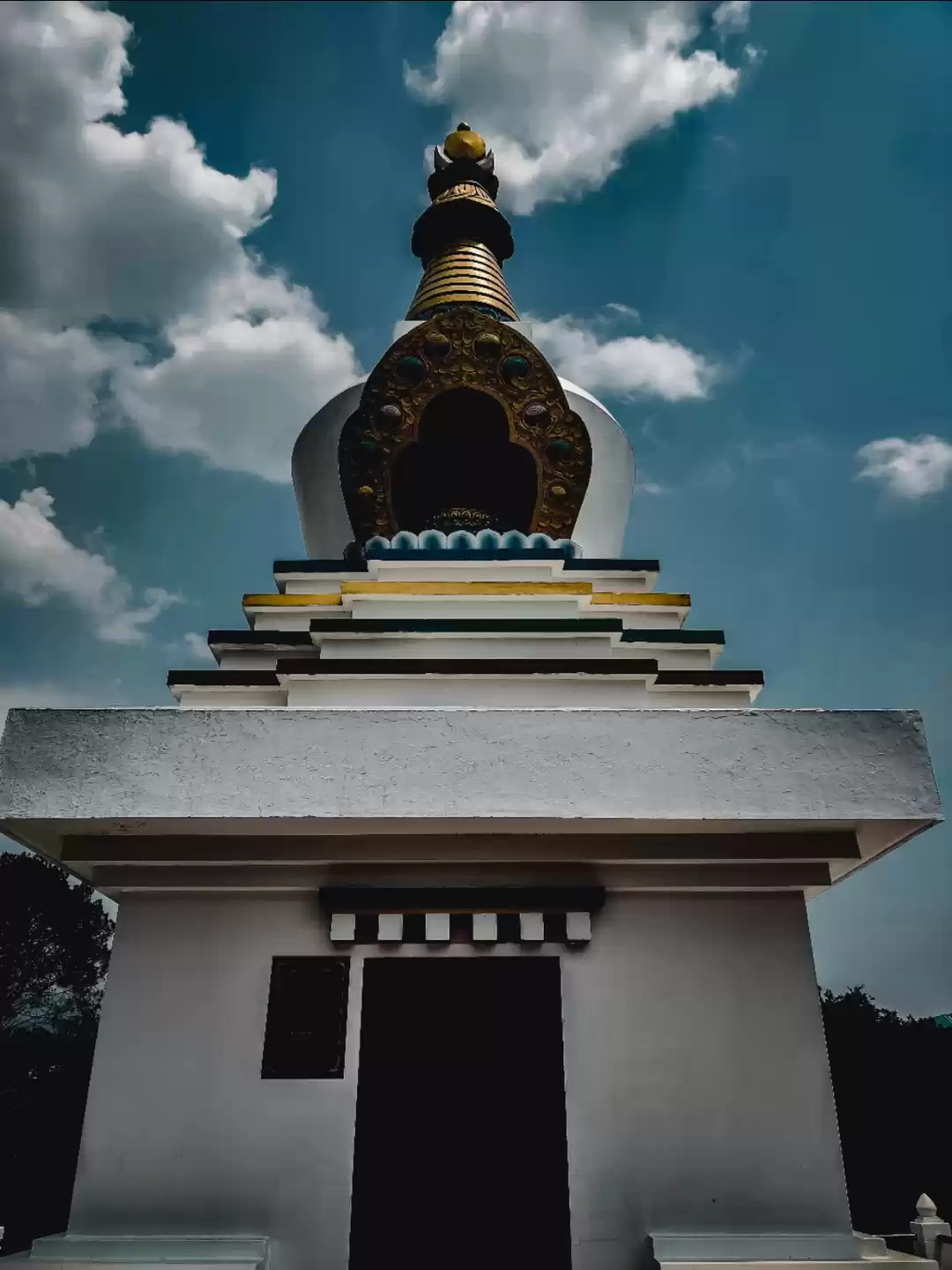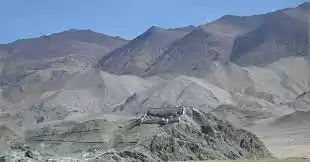Are you looking for a place to escape the hustle and bustle of the city and immerse yourself in a serene and sacred atmosphere? If yes, then Namgyal Monastery in Mcleodganj is the perfect destination for you. Namgyal Monastery is the personal monastery of the Dalai Lama and a center of Tibetan Buddhism. It is located in the picturesque hill station of Mcleodganj, which is also known as Little Lhasa or Dhasa, because of its large population of Tibetans.
Namgyal Monastery is a place where you can learn about the rich history and culture of Tibet, witness the stunning architecture and art of the Tibetan temple, participate in the meditation and prayer sessions, and attend the teachings and public audiences of the Dalai Lama. In this article, we will tell you everything you need to know about Namgyal Monastery, such as its history, spiritual significance, things to do, how to reach, best time to visit, and tips for visiting. Read on to discover why Namgyal Monastery is a must-visit place for anyone who wants to experience the beauty and spirituality of Mcleodganj.
History of Namgyal Monastery
Namgyal Monastery was founded in 1575 by the Third Dalai Lama, Sonam Gyatso, in Lhasa, the capital of Tibet. The name Namgyal means “victorious” in Tibetan, and the monastery was established to assist the Dalai Lama in his religious and political affairs, and to preserve and promote the Tibetan culture, religion, and identity. Namgyal Monastery was home to hundreds of monks who studied and practiced the teachings and practices of Tibetan Buddhism, especially the Sutra and Tantra. The monastery also hosted various rituals and ceremonies, such as the creation and dissolution of sand mandalas, the hoisting of prayer flags, and the offering of butter lamps.
However, in 1959, after the Chinese invasion of Tibet and the uprising of the Tibetan people, the Dalai Lama and many of his followers fled to India and sought refuge there. Namgyal Monastery was also relocated to India, and was initially set up in Birla House in Mussoorie, Uttarakhand. Later, in 1960, the Indian government granted a land in Mcleodganj, Himachal Pradesh, to the Dalai Lama and the Tibetan government in exile, and Namgyal Monastery was moved there. Since then, Namgyal Monastery has been the residence and the personal monastery of the Dalai Lama, and the headquarters of the Tibetan government in exile.

Namgyal Monastery has also continued its role and mission of preserving and promoting the Tibetan culture, religion, and identity, and has attracted thousands of visitors and followers from across the world. Namgyal Monastery has also been involved in various social and humanitarian activities, such as providing education, health care, and relief to the Tibetan refugees and the local communities. In 1989, the Dalai Lama was awarded the Nobel Peace Prize for his efforts to achieve a peaceful and non-violent solution to the Tibetan issue, and Namgyal Monastery celebrated this occasion with great joy and pride.
Spiritual Significance of Namgyal Monastery
Namgyal Monastery is not just a historical and cultural landmark, but also a spiritual and sacred place. Namgyal Monastery is the center of Tibetan Buddhism and the personal monastery of the Dalai Lama, who is the spiritual and temporal leader of the Tibetan people and the highest authority of Tibetan Buddhism. Tibetan Buddhism is a branch of Mahayana Buddhism, which emphasizes the cultivation of wisdom and compassion, and the attainment of enlightenment for the benefit of all sentient beings. Tibetan Buddhism also incorporates the teachings and practices of Vajrayana Buddhism, which is also known as Tantric Buddhism, which uses various methods and techniques, such as mantras, mudras, visualizations, and deities, to achieve a direct and rapid transformation of the mind and the body.
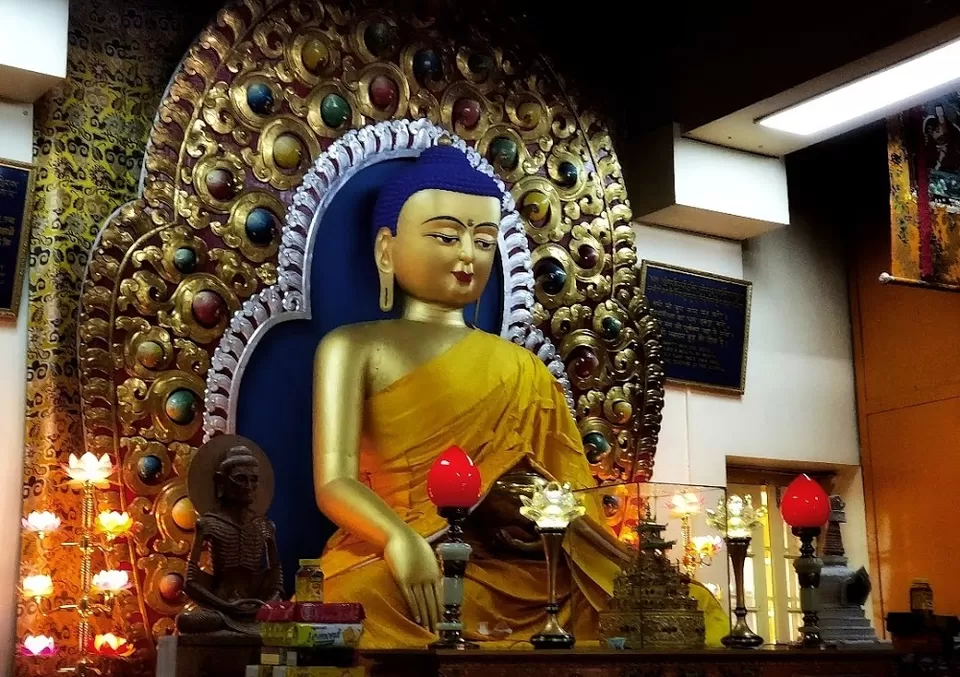
At Namgyal Monastery, you can learn about the main teachings and practices of Tibetan Buddhism, such as the Sutra and Tantra, and how they are studied and applied by the monks and the Dalai Lama. The Sutra is the collection of the discourses of the Buddha, which are the basis of the Buddhist philosophy and ethics. The Tantra is the collection of the esoteric teachings of the Buddha, which are the basis of the Buddhist meditation and ritual. At Namgyal Monastery, you can see the monks and the Dalai Lama engaging in various activities, such as reading, reciting, debating, and writing the Buddhist texts, and performing the meditation and prayer sessions. You can also join them in these activities, and experience the serene and spiritual atmosphere of Namgyal Monastery.
One of the most unique and fascinating aspects of Namgyal Monastery is the rituals and ceremonies that are performed there, such as the creation and dissolution of sand mandalas, the hoisting of prayer flags, and the offering of butter lamps. A sand mandala is a circular diagram made of colored sand, which represents the cosmic and the spiritual realms, and the deities and the symbols of Tibetan Buddhism. The monks spend days or weeks to create a sand mandala, using intricate and precise techniques, and then dissolve it in a river or a lake, as a symbol of the impermanence and the interdependence of all phenomena. A prayer flag is a colorful cloth that has prayers and mantras printed on it, which are believed to spread positive energy and blessings to all beings. The monks and the locals hoist the prayer flags on poles, bridges, roofs, and mountains, and let the wind carry the prayers and the mantras to the world. A butter lamp is a small vessel filled with clarified butter or oil, which has a wick that burns with a bright flame. The monks and the devotees offer the butter lamps to the Buddha and other deities, as a symbol of wisdom and enlightenment, and as a way to dispel the darkness and ignorance.
One of the most amazing and rewarding opportunities of visiting Namgyal Monastery is to attend the teachings and public audiences of the Dalai Lama, who is revered and respected by millions of people around the world for his wisdom, compassion, and charisma. The Dalai Lama gives teachings and public audiences several times a year, usually in the months of February, March, May, June, September, and October, and sometimes on special occasions, such as his birthday, the Tibetan New Year, and the Nobel Peace Prize anniversary.
The teachings and public audiences are held in the Tsuglagkhang Complex, which is adjacent to Namgyal Monastery, and are open to anyone who registers in advance. The teachings and public audiences are usually conducted in Tibetan, but are translated into various languages, such as English, Hindi, Chinese, and Japanese, through headphones and radios. The teachings and public audiences are an opportunity to listen to the Dalai Lama’s insights and advice on various topics, such as Buddhism, ethics, peace, happiness, and interfaith harmony, and to receive his blessings and guidance.
Things to Do at Namgyal Monastery
Namgyal Monastery is not only a place to learn and meditate, but also a place to have fun and explore. Namgyal Monastery and its surroundings offer a variety of attractions and activities that visitors can enjoy, such as:

Tsuglagkhang Complex:
The Tsuglagkhang Complex is the largest Tibetan temple outside Tibet, which houses the Tsuglagkhang Temple, the Tibet Museum, and the residence of the Dalai Lama. The Tsuglagkhang Temple is the main attraction of the complex, which has a 9-meter tall gilded statue of Buddha Shakyamuni, along with statues of Chenrezig and Guru Rinpoche. The temple also has a rich collection of thangkas, paintings, murals, and relics, which depict the life and teachings of the Buddha and the history and culture of Tibet. The temple is also the venue for the teachings and public audiences of the Dalai Lama, and the rituals and ceremonies of the monks. The Tibet Museum is a small but informative museum, which showcases the history, culture, and struggle of the Tibetan people, through photographs, videos, documents, and artifacts. The museum also has a library, a souvenir shop, and a cafe. The residence of the Dalai Lama is a modest and simple building, which is surrounded by a beautiful garden and a security wall. The residence is not open to the public, but visitors can catch a glimpse of the Dalai Lama from a distance, if they are lucky.

Buddha Statue:
The Buddha Statue is a 9-meter tall gilded statue of Buddha Shakyamuni, which is the focal point of the Tsuglagkhang Temple and a symbol of peace and compassion. The statue was consecrated by the Dalai Lama in 2005, and is made of copper, brass, and gold. The statue depicts the Buddha in the earth-touching gesture, which signifies his enlightenment under the Bodhi tree. The statue is surrounded by smaller statues of the 16 Arhats, who were the disciples of the Buddha, and the four Guardian Kings, who protect the four directions. The statue is also adorned with flowers, candles, and offerings, which are made by the monks and the devotees. The statue is a sight to behold, especially during the sunrise and the sunset, when the golden rays of the sun illuminate the statue and create a magical effect.

Prayer Wheels:
Prayer wheels are cylindrical devices that contain scrolls of Buddhist scriptures, which are spun by the devotees to generate merit and blessings. The prayer wheels are usually made of metal, wood, or stone, and have mantras and symbols engraved on them. The most common mantra is Om Mani Padme Hum, which is the mantra of Chenrezig, the Buddha of Compassion. The prayer wheels are found in various sizes and shapes, and are placed along the walls, corridors, and courtyards of Namgyal Monastery and the Tsuglagkhang Complex. The devotees spin the prayer wheels clockwise, while reciting the mantra and holding a rosary in their hands. It is believed that spinning the prayer wheels has the same effect as reading the scriptures, and that it purifies the mind, accumulates wisdom, and brings happiness and peace.

Meditation and Prayer:
Meditation and prayer are the best ways to experience the serene and spiritual atmosphere of Namgyal Monastery, and to connect with oneself and the divine. Meditation is the practice of calming and focusing the mind, and developing awareness and insight. Prayer is the practice of expressing one’s faith and devotion, and requesting for guidance and protection. At Namgyal Monastery, you can join the monks and the devotees in the meditation and prayer sessions, which are held in the morning and evening, and last for about an hour. You can also meditate and pray on your own, in any quiet and comfortable spot in the monastery or the complex. You can use the Buddha statue, the prayer flags, the prayer wheels, or the butter lamps as your objects of meditation and prayer, and follow the instructions and chants of the monks and the devotees. You can also use your own methods and techniques, such as breathing, visualization, or silence. Meditation and prayer can help you relax, heal, and transform your mind and heart, and bring you closer to the essence of Namgyal Monastery and Tibetan Buddhism.

Shopping and Dining:
Shopping and dining are the options to buy souvenirs and handicrafts from the local shops and stalls, and to taste the authentic Tibetan cuisine and beverages from the nearby cafes and restaurants. You can find a variety of items to buy, such as thangkas, paintings, statues, jewelry, carpets, clothes, books, CDs, DVDs, and souvenirs, which reflect the art, culture, and spirituality of Tibet. You can also find a variety of dishes to try, such as momos, thukpa, tingmo, shapta, thentuk, khapse, butter tea, and chang, which are the staples of the Tibetan diet. Shopping and dining are the ways to support the local economy and the Tibetan cause, and to enjoy the flavors and colors of Mcleodganj.
How to Reach Namgyal Monastery
Namgyal Monastery is located in Mcleodganj, which is a suburb of Dharamshala, in the Kangra district of Himachal Pradesh, India. Mcleodganj is well-connected by air, rail, road, and trek, and you can choose the mode and route that suits your convenience and budget. Here are the details of the different modes and routes that you can use to reach Namgyal Monastery from various locations in India and abroad:
By Air:
The nearest airport is Gaggal Airport, which is about 15 km from Mcleodganj, and has flights from Delhi, Chandigarh, and Kullu. From the airport, you can take a cab or a bus to reach Namgyal Monastery, which will cost you around Rs. 300 to Rs. 500, and take you about 45 minutes to an hour. You can also book a flight to Chandigarh or Delhi, which are the major airports in the region, and have flights from all over India and the world. From Chandigarh or Delhi, you can take a cab, a bus, or a train to reach Mcleodganj, which will cost you around Rs. 1000 to Rs. 3000, and take you about 6 to 10 hours.
By Rail:
The nearest railway station is Pathankot, which is about 90 km from Mcleodganj, and has trains from Delhi, Amritsar, and Jammu. From the station, you can take a cab or a bus to reach Namgyal Monastery, which will cost you around Rs. 500 to Rs. 1000, and take you about 3 to 4 hours. You can also book a train to Chandigarh or Delhi, which are the major railway stations in the region, and have trains from all over India. From Chandigarh or Delhi, you can take a cab, a bus, or another train to reach Mcleodganj, which will cost you around Rs. 1000 to Rs. 3000, and take you about 6 to 10 hours.
By Road:
Mcleodganj is well-connected by road to major cities and towns in Himachal Pradesh and neighboring states, such as Shimla, Manali, Dharamshala, Chandigarh, and Delhi. You can drive your own vehicle or hire a cab or a bike to reach Namgyal Monastery, which will cost you around Rs. 10 to Rs. 20 per km, and take you about 4 to 8 hours, depending on the traffic and the road conditions. You can also take a bus to reach Mcleodganj, which will cost you around Rs. 500 to Rs. 1500, and take you about 6 to 12 hours, depending on the type and the frequency of the bus.
By Trek:
For the adventurous and fit visitors, there is an option to trek from Dharamshala to Mcleodganj, which is about 10 km, and enjoy the scenic views of the mountains and valleys along the way. From Dharamshala, you can take a cab or a bus to reach the starting point of the trek, which is near the War Memorial or the Kunal Pathri Temple. From there, you can follow the trail that leads to Mcleodganj, which will take you about 3 to 4 hours, depending on your pace and stamina. You can also hire a guide or join a group to make your trek more safe and fun. From Mcleodganj, Namgyal Monastery is a short walk away.
Best Time to Visit Namgyal Monastery
Namgyal Monastery is open to the public throughout the year, but the best time to visit Namgyal Monastery depends on the weather, festivals, and events. Here are some factors to consider when planning your visit to Namgyal Monastery:
Weather:
Mcleodganj has a pleasant and moderate climate throughout the year, with temperatures ranging from 15°C to 30°C in summer (March to June), and from 0°C to 15°C in winter (November to February). The summer season is the best time to visit Namgyal Monastery, as the weather is ideal for sightseeing, trekking, and camping, and the views of the snow-capped mountains are clear and stunning. The winter season is also a good time to visit Namgyal Monastery, as the weather is cold and cozy, and the views of the snow-covered landscape are mesmerizing and magical.
However, you will need to carry warm clothes and accessories, and be prepared for road closures and power cuts. The monsoon season (July to September) is the worst time to visit Namgyal Monastery, as the weather is wet and humid, and the views of the mountains are obscured by the clouds and the fog. The monsoon season also brings heavy rainfall and landslides, which make the roads slippery and dangerous, and the travel difficult and risky.
Festivals:
Mcleodganj celebrates various Tibetan and Indian festivals, which add to the charm and vibrancy of the place. Some of the major festivals that you can witness and participate in at Namgyal Monastery are:
Losar: Losar is the Tibetan New Year, which is celebrated in late January or early February, according to the lunar calendar. Losar is a three-day festival, which marks the beginning of a new year and a new cycle of life. Losar is celebrated with prayers, rituals, offerings, dances, music, and feasts, and is a time to express gratitude, joy, and hope. At Namgyal Monastery, you can see the monks and the locals performing the traditional ceremonies, such as the raising of the prayer flags, the burning of the juniper incense, the offering of the khapse (fried pastries), and the chanting of the auspicious verses. You can also join them in the festivities, such as the wearing of the new clothes, the exchanging of the greetings and gifts, and the enjoying of the delicacies and drinks.
Buddha Purnima: Buddha Purnima is the birth anniversary of the Buddha, which is celebrated in late April or early May, according to the lunar calendar. Buddha Purnima is a day to commemorate the life and teachings of the Buddha, and to reaffirm one’s faith and devotion. Buddha Purnima is celebrated with prayers, meditation, recitation, and offerings, and is a day to practice generosity, compassion, and non-violence. At Namgyal Monastery, you can see the monks and the devotees offering flowers, candles, and fruits to the Buddha statue, and listening to the Dalai Lama’s discourse on the Dhammapada, the collection of the Buddha’s sayings. You can also join them in the celebrations, such as the bathing of the Buddha statue, the circumambulation of the monastery, and the distribution of the kheer (rice pudding), which is a traditional dish prepared on this occasion.
Dalai Lama’s Birthday: Dalai Lama’s Birthday is the most auspicious and joyous day for the Tibetan people and the followers of Tibetan Buddhism, which is celebrated on July 6 every year. Dalai Lama’s Birthday is a day to express gratitude, respect, and love for the Dalai Lama, who is the embodiment of the Buddha of Compassion, and the source of inspiration and guidance for millions of people around the world. Dalai Lama’s Birthday is celebrated with prayers, songs, dances, and cakes, and is a day to wish for the long life and good health of the Dalai Lama, and for the peace and happiness of all beings. At Namgyal Monastery, you can see the monks and the locals performing the traditional ceremonies, such as the offering of the long-life prayers, the cutting of the birthday cake, and the singing of the Tibetan national anthem. You can also join them in the festivities, such as the waving of the Tibetan flags, the wearing of the traditional costumes, and the enjoying of the cultural performances and the musical concerts.
Tsechu: Tsechu is a mask dance festival, which is celebrated in late September or early October, according to the lunar calendar. Tsechu is a festival that honors Guru Rinpoche, who is also known as Padmasambhava, the founder of Tibetan Buddhism, and the master of the Tantric teachings. Tsechu is celebrated with dances, dramas, and music, which depict the stories and legends of Guru Rinpoche and his eight manifestations, and the teachings and values of Tibetan Buddhism. Tsechu is also a festival that showcases the art, culture, and heritage of Tibet, and the skills and talents of the performers and the artists. At Namgyal Monastery, you can see the monks and the locals performing the mask dances, which are also known as cham, in the courtyard of the Tsuglagkhang Complex. The mask dances are colorful and elaborate, and involve the wearing of the masks, costumes, and accessories, which represent the deities, demons, animals, and characters of the Tibetan mythology. The mask dances are accompanied by the music and the chants, which create a lively and festive atmosphere. You can also join them in the celebrations, such as the watching of the dramas, the playing of the games, and the eating of the snacks and the sweets.
Dussehra: Dussehra is an Indian festival, which is celebrated in late September or early October, according to the lunar calendar. Dussehra is a festival that marks the victory of good over evil, and the triumph of Lord Rama over the demon king Ravana, as narrated in the epic Ramayana. Dussehra is celebrated with prayers, rituals, and fireworks, and is a day to celebrate the power and the glory of Lord Rama, and to seek his blessings and protection. At Namgyal Monastery, you can see the monks and the locals participating in the Dussehra celebrations, which are organized by the local administration and the community. The Dussehra celebrations include the burning of the effigies of Ravana, Kumbhakarna, and Meghnad, which symbolize the destruction of the evil forces, and the display of the fireworks, which light up the sky with bright colors and patterns. You can also join them in the celebrations, such as the singing of the bhajans, the dancing of the garba, and the enjoying of the fair and the stalls.
Diwali: Diwali is an Indian festival, which is celebrated in late October or early November, according to the lunar calendar. Diwali is a festival of lights, which signifies the return of Lord Rama to his kingdom after defeating Ravana, and the victory of light over darkness, and knowledge over ignorance. Diwali is celebrated with prayers, lamps, candles, and rangoli, and is a day to worship Lord Rama, Goddess Lakshmi, and Lord Ganesha, and to seek their grace and prosperity. Diwali is also a festival of joy and happiness, which is celebrated with family, friends, and neighbors, and with gifts, sweets, and crackers. At Namgyal Monastery, you can see the monks and the locals celebrating Diwali with enthusiasm and harmony, and respecting the diversity and the unity of the Indian culture and the Tibetan culture. The Diwali celebrations include the lighting of the lamps and candles, which adorn the monastery and the complex, and the making of the rangoli, which are colorful patterns made of flowers, rice, and sand, and which decorate the floors and the walls. You can also join them in the celebrations, such as the exchanging of the greetings and the wishes, the sharing of the sweets and the delicacies, and the bursting of the crackers and the sparklers.
Christmas: Christmas is a Christian festival, which is celebrated on December 25 every year. Christmas is a festival that commemorates the birth of Jesus Christ, who is the son of God and the savior of the world. Christmas is celebrated with prayers, carols, and cakes, and is a day to celebrate the love and the mercy of God, and to spread the message of peace and goodwill. Christmas is also a festival of joy and cheer, which is celebrated with family, friends, and strangers, and with gifts, cards, and decorations. At Namgyal Monastery, you can see the monks and the locals celebrating Christmas with respect and tolerance, and appreciating the diversity and the beauty of the different religions and cultures. The Christmas celebrations include the attending of the mass and the service, which are held at the St. John’s Church, which is a historical and charming church near Mcleodganj, and the singing of the carols and the hymns, which express the faith and the devotion of the Christians. You can also join them in the celebrations, such as the cutting of the cake and the pudding, which are the traditional desserts of the Christmas, and the exchanging of the gifts and the cards, which are the tokens of the friendship and the gratitude.
Tips for Visiting Namgyal Monastery
Namgyal Monastery is a place that welcomes and embraces everyone, regardless of their religion, nationality, or background. However, there are some useful and practical tips and suggestions that you should keep in mind when visiting Namgyal Monastery, to make your visit smooth and enjoyable. Here are some of the tips that you should follow when visiting Namgyal Monastery:
Photography:
You are allowed to take photos and videos of the Namgyal Monastery and its surroundings, except inside the Tsuglagkhang Temple and the Tibet Museum, where photography is prohibited. You should also respect the privacy and consent of the monks and the locals before taking their photos, and avoid using flash or loud noises that might disturb them or the ambiance.
Dress Code:
You should dress modestly and appropriately when visiting Namgyal Monastery and other religious places, and avoid wearing shorts, skirts, sleeveless tops, and hats. You should also remove your shoes and hats before entering the Tsuglagkhang Temple and the Tibet Museum, and cover your head and shoulders with a scarf or a shawl, if required.
Etiquette:
You should follow the etiquette and norms of Namgyal Monastery and Tibetan culture, such as greeting the monks and the locals with a smile and a bow, walking clockwise around the monastery and the prayer wheels, not touching the Buddha statue and other sacred objects, and not pointing your feet or fingers at the monks, the locals, or the Buddha statue. You should also maintain silence and respect in the monastery and the complex, and avoid any actions or words that might offend or hurt the sentiments of the monks and the locals.
Timings:
Namgyal Monastery is open to the public from 6 am to 7 pm every day, except during the Dalai Lama’s teachings and public audiences, when the entry is restricted to the registered participants only. You should check the timings and availability of the monastery before planning your visit, and arrive early to avoid the crowds and the queues. You should also check the dates and schedules of the Dalai Lama’s teachings and public audiences, which are announced on the official website of Namgyal Monastery and the Dalai Lama, and register in advance, if you wish to attend them.
Entry Fee:
There is no entry fee for visiting Namgyal Monastery, but you are welcome to make donations and offerings to support the monastery and its activities. You can also buy books, CDs, DVDs, and souvenirs from the monastery’s shop, which are reasonably priced and of good quality.
Namgyal Monastery is a place that offers a unique and unforgettable experience for anyone who visits it. Namgyal Monastery is a place where you can learn about the rich history and culture of Tibet, witness the stunning architecture and art of the Tibetan temple, participate in the meditation and prayer sessions, and attend the teachings and public audiences of the Dalai Lama. Namgyal Monastery is also a place where you can have fun and explore the various attractions and activities that Mcleodganj has to offer, such as the Tsuglagkhang Complex, the Buddha Statue, the Prayer Wheels, the Shopping and Dining, and the Festivals and Events. Namgyal Monastery is a place that will inspire and enlighten you, and make you feel the beauty and spirituality of Mcleodganj.
We hope this article has given you a comprehensive and engaging overview of Namgyal Monastery, and has motivated you to plan your trip to this amazing destination. If you have any feedback, comments, or questions, please feel free to share them with us. We would love to hear from you and help you with your travel needs. Thank you for reading, and happy travels!

